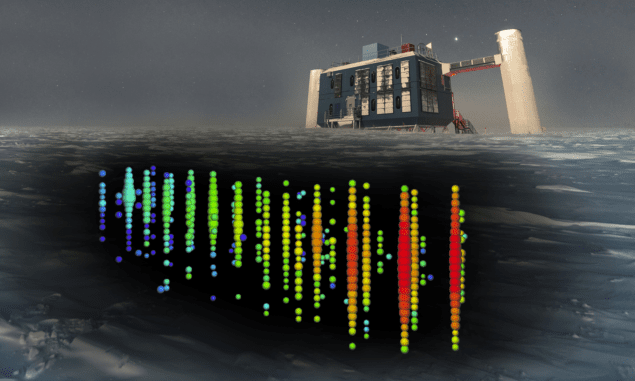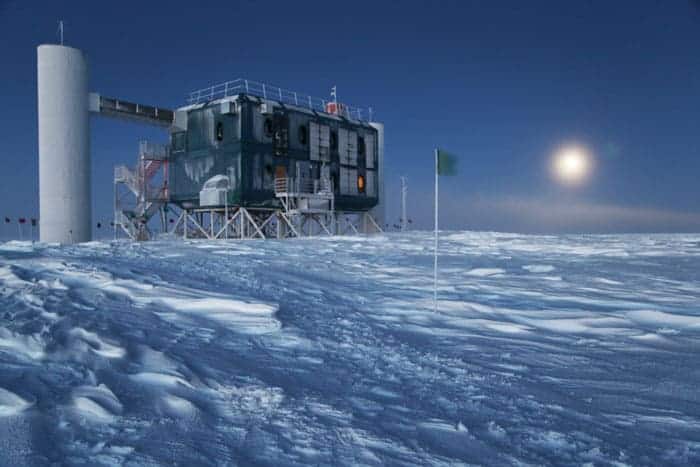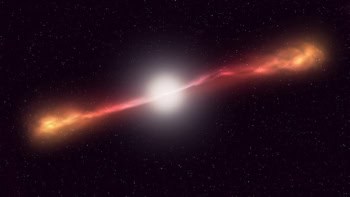
A high-energy neutrino detected by IceCube in 2017 was created in a blazar – an intense source of radiation powered by a supermassive black hole. That is the claim of three international teams of astronomers, who have characterized the event using three different instruments in another important breakthrough of multimessenger astronomy. The IceCube team also looked back at previous neutrino detections and say that these particles may have also come from the blazar. Together, the observations make a strong case that blazars are a source of high-energy cosmic rays – a hypothesis that had been discounted by many astronomers.
Located at the South Pole, IceCube comprises more than 5000 photomultiplier tubes buried in the Antarctic ice cap. Very occasionally a neutrino will collide with an atom, creating charged particles that emit light as they travel through the ice. This light is captured by photomultiplier tubes, and in some cases the signal can be used to work-out where in the sky the neutrino came from.
On 22 September 2017, IceCube detected a 290 TeV neutrino that could be traced back to TXS 0506+056, which is a well-known, but poorly studied, blazar that emits copious amounts of gamma rays. A near real-time alerting system meant that astronomers using the Fermi Gamma-ray Space Telescope in space and the MAGIC gamma-ray telescope on the Canary Islands could focus on the blazar less than a minute after the neutrino detection.
Extremely high energy
Fermi immediately spotted a very strong gamma-ray flare from the blazar and follow-up observations by MAGIC detected gamma rays with energies as high as 400 GeV. This emission of extremely high-energy gamma rays, say astronomers associated with the study, is evidence that the blazar could also generate very high energy cosmic rays. These energetic particles could then go on to create the high-energy neutrino detected by IceCube.
The 2017 observation inspired IceCube physicists to look back at previous high-energy neturinos captured by the detector. They found an increase in neutrino detections from the vicinity of the blazar over a five-month period beginning in September 2014. They calculate that the statistical significance of this neutrino “flare” being associated with the blazar to be 3.5σ, which is still well below the value of 5σ for a “discovery” in particle physics. Similarly, the statistical significance of the September observation is also below discovery level at 3σ.
Consensus shattered
Although more observations are need, the research provides strong evidence that blazars are a source of high-energy cosmic rays – a hypothesis that has been contentious. “It is interesting that there was a general consensus in the astrophysics community that blazars were unlikely to be sources of cosmic rays, and here we are,” says Francis Halzen, a of the University of Wisconsin-Madison and IceCube’s lead scientist.

Cosmic-ray theory gets the cold shoulder
Cosmic rays are charged particles, so they are bent off course by galactic and extragalactic magnetic fields as they travel to Earth – making it impossible for astronomers to trace cosmic rays back to their sources.
The research is reported in two papers in Science.



